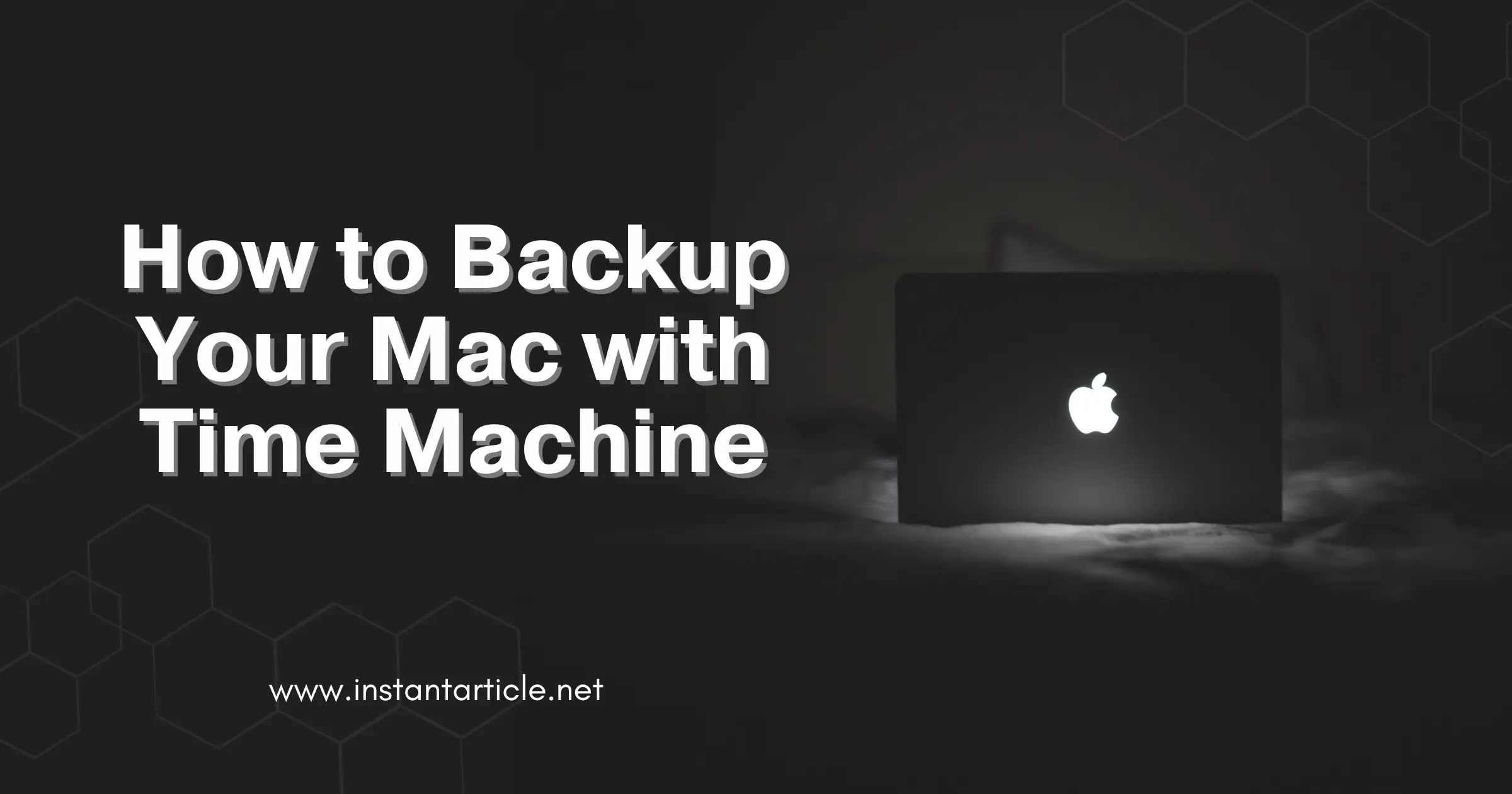Backing up your Mac is essential to protect your data from accidental loss, hardware failures, or software issues. Time Machine, Apple’s built-in backup feature, makes this process simple and efficient. This guide will walk you through the steps to backup your Mac using Time Machine, ensuring your data is safe and secure.
Why Backup Your Mac with Time Machine?
Time Machine offers several benefits:
- Automatic Backups: Time Machine automatically backs up your entire system, including files, applications, and settings.
- Easy Restoration: Easily restore individual files or your entire system from a Time Machine backup.
- Incremental Backups: Time Machine saves hourly, daily, and weekly backups, allowing you to recover different versions of your files.
Personal Anecdote
I remember the first time I realized the importance of backing up my data. I was working on a crucial project for school, and my Mac suddenly crashed. I hadn’t backed up my files and lost weeks of hard work. That’s when I discovered Time Machine, and it has been a lifesaver ever since. Setting it up was straightforward, and it has given me peace of mind knowing my data is always safe.
Requirements
Before starting, you need:
- An External Hard Drive: Use a dedicated external hard drive or SSD with enough storage to hold your backups. A good rule of thumb is to have a drive with at least twice the capacity of your Mac’s internal storage.
- macOS Version: Ensure your Mac is running macOS 10.5 Leopard or later. The latest macOS versions, including macOS Ventura, have enhanced Time Machine features.
Steps to Backup Your Mac with Time Machine
Here’s a detailed, step-by-step guide to help you set up and use Time Machine to back up your Mac effectively. Follow these instructions to ensure your data is securely backed up and easily recoverable.
- Connect Your External Hard Drive
– Plug the external hard drive into your Mac.
– If prompted, choose to use the drive with Time Machine. - Set Up Time Machine
– Open System Preferences from the Apple menu.
– Click on Time Machine.
– Click Select Backup Disk.
– Choose your external hard drive and click Use Disk. - Configure Backup Options
– Check the box next to Back Up Automatically to enable automatic backups.
– You can exclude specific items from the backup by clicking Options and adding files or folders to the exclusion list. - Start Your First Backup
– Time Machine will begin its first backup automatically. This may take some time, depending on the size of your data.
– After the initial backup, Time Machine will perform hourly backups for the past 24 hours, daily backups for the past month, and weekly backups for all previous months. - Monitor Backup Status
– You can monitor the backup progress by clicking the Time Machine icon in the menu bar.
– Ensure your external hard drive remains connected during backups to avoid interruptions.
Restoring Data from Time Machine
Restoring Individual Files
- Open the folder where the lost file was originally located.
- Click the Time Machine icon in the menu bar and choose Enter Time Machine.
- Use the timeline on the right edge of the screen to locate the file.
- Select the file and click Restore.
Restoring Your Entire System
- Connect your Time Machine backup drive to your Mac.
- Restart your Mac and hold down the Command (⌘) and R keys until the Apple logo appears.
- Select Restore from Time Machine Backup and click Continue.
- Choose the backup you want to restore from and follow the on-screen instructions.
Tips for Effective Backups
- Regularly Check Backups: Ensure your backups are up to date and functioning correctly. Regularly verify that your most recent files are being backed up.
- Use Multiple Backup Drives: Consider using multiple drives to create redundant backups. You can rotate these drives to ensure one backup is always stored offsite.
- Store Backups Safely: Keep your backup drive in a safe place to protect against physical damage or theft. Using a fireproof safe or offsite storage can add an extra layer of protection.
Personal Anecdote
A few months ago, my friend accidentally deleted an important presentation just hours before a big meeting. Thankfully, she had set up Time Machine after I recommended it. She was able to restore the deleted file within minutes and saved the day.
Frequently Asked Questions (FAQs)
Time Machine automatically backs up your data hourly, daily, and weekly. However, it’s a good practice to manually start a backup before making significant changes or updates to your system.
Yes, you can use any external hard drive or SSD with Time Machine, but it’s recommended to use one with at least twice the storage capacity of your Mac’s internal storage.
When your backup drive gets full, Time Machine automatically deletes the oldest backups to make space for new ones. You can also manage space by excluding unnecessary files from your backups.
Yes, you can access your Time Machine backups from another Mac by connecting the external hard drive and selecting it as the backup disk in Time Machine preferences.
No, there are other backup options available, such as third-party software and cloud storage services. However, Time Machine is a reliable and easy-to-use option integrated into macOS.
Conclusion
Knowing how to backup your Mac with Time Machine is crucial for data security. By following these steps, you can ensure your files, applications, and system settings are backed up and easily recoverable. Regular backups provide peace of mind and protect against unexpected data loss.
Engage with the Reader
Do you have any stories about data loss or backup saves? Share your experiences in the comments! And if you haven’t set up Time Machine yet, what are you waiting for? Take a few minutes today to protect your valuable data.
By setting up Time Machine, you are taking a significant step towards safeguarding your digital life. Make sure to maintain your backups and update them regularly for optimal protection.

